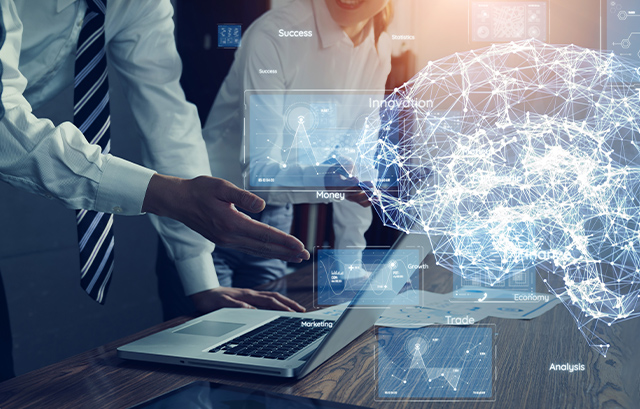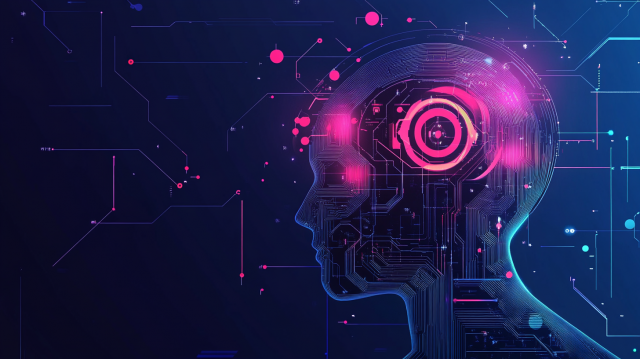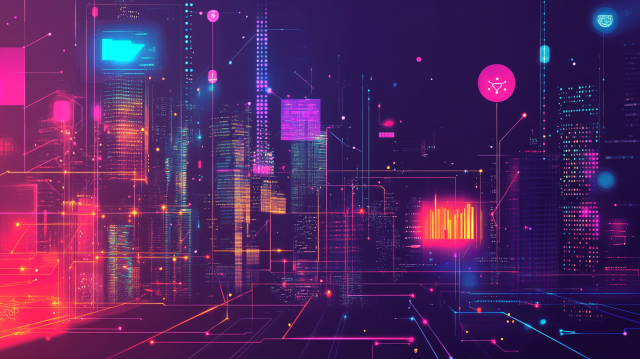
- Table of Contents
-
- 1. Internal Use Cases of Generative AI "ChatGPT"
- 1-1. What is ChatGPT?
- 1-2. Internal Use Cases for ChatGPT
- 2. Scenarios for Utilizing ChatGPT in Translation Work
- 2-1. ChatGPT's Translation Features
- 2-2. Internal Use Cases of ChatGPT
- 3. Successful Examples of Utilizing ChatGPT in Translation Services
- 3-1. Introduction to Comprehensive Electrical Equipment Manufacturers
- 3-2. Initiatives at the University
- 3-3. Utilization in Local Governments
- 4. Points to Note for Internal Use of ChatGPT
- 4-1. Considering the Risks of Information Leakage
- 4-2. Considering the Risks of Violating Personal Information Protection Law and Copyright Law
- 4-3. The generated information and translations are not always guaranteed to be accurate.
- 4-4. Translation cannot capture cultural backgrounds, unique expressions, or nuances.
- 5. Summary
1. Internal Use Cases of Generative AI "ChatGPT"

1-1. What is ChatGPT?
ChatGPT is a highly advanced language model developed by OpenAI in the United States. This model utilizes AI technology to enable conversations in a chat format with users, making the dialogue feel as natural as conversations between humans. ChatGPT primarily learns from a vast amount of text data available on web pages, allowing it to generate text that resembles natural human writing.
The uses of ChatGPT are diverse, including text summarization, understanding context, generating programming code, creating articles, and translation. ChatGPT can act not only as a conversational partner but also as a worker handling various tasks. For example, if a user wants a long text summarized, ChatGPT extracts the main points and responds in a compact and easy-to-understand manner. Additionally, it can generate complex programming code very efficiently. Furthermore, it can smoothly handle translations between different languages, making it useful for multilingual business and learning support. For more details on how to utilize ChatGPT for translation, please see the article below.
How to Use ChatGPT for Translation – Usage Methods and Practical Procedures
1-2. Internal Use Cases for ChatGPT
ChatGPT can be utilized for various purposes within the company. One of its main uses is for writing documents such as emails and reports. By considering appropriate language and structure, it can generate text quickly and effectively, thereby improving operational efficiency. Additionally, it can also proofread text, enhancing the quality of communication by improving grammar, vocabulary, and expression.
Furthermore, ChatGPT is also used for document translation. It supports over 50 languages and can translate with high accuracy comparable to dedicated translation services. In manual creation, it can generate standard and concise wording, clearly explaining procedures. It is also valued as a tool for quickly gathering necessary information in tasks such as information research and searching internal data.
It is also utilized as an internal help desk. By providing quick support for problem-solving and answers to frequently asked questions, it can improve employee work efficiency. In the analysis of financial statements, it can interpret complex data and also explain it clearly using diagrams and graphs. Regarding programming coding assistance, it generates code and supports debugging, reducing the workload of engineers.
In the sales department, it can be used as a product knowledge assistant. By providing detailed information and features about the products instantly, it not only smooths customer interactions but also enhances reliability. Additionally, in survey analysis, it can efficiently process large amounts of data to derive important trends and insights. It is capable of creating meeting minutes and transcribing audio data, helping to organize and quickly summarize the vast amount of text data after meetings.
In this way, ChatGPT is widely used as a tool to support various internal operations and improve employee work efficiency.

2. Scenarios for Utilizing ChatGPT in Translation Work

2-1. ChatGPT's Translation Features
To use ChatGPT for translation, you can give commands like "Translate XX to Japanese" (this command is called a prompt). ChatGPT supports over 50 languages, including English, Chinese, Korean, Spanish, French, German, Russian, Portuguese, and Hindi. For more details on ChatGPT's translation capabilities, please see the article below.
Is ChatGPT a Good Translator? Thorough Verification at Each Stage of Translation
2-2. Internal Use Cases of ChatGPT
ChatGPT is being utilized in various scenarios within the company.
When communicating via email with overseas bases or clients, it is necessary to create emails in foreign languages. However, you can write the main points in Japanese and then have ChatGPT draft the entire email in the local language. Unlike traditional machine translation tools, which required preparing the entire text in Japanese, with ChatGPT, you only need to provide the main points, significantly reducing the time needed to compose emails.
Additionally, when referencing foreign literature during information research, it takes time to understand materials written in the local language. By using ChatGPT, you can perform summarization and translation simultaneously, allowing for efficient research of large volumes of literature regardless of the language.
ChatGPT is extremely useful for creating texts such as English advertising catchphrases and press releases. By generating creative expressions and words that resonate with the target audience, it significantly contributes to the success of marketing activities.
ChatGPT can also be used as a tool for checking translated documents. It can automatically detect errors in human-translated texts and suggest appropriate corrections, making it possible to create high-quality translated documents. Additionally, you can have ChatGPT check texts translated by other automatic translation tools. ChatGPT not only detects mistranslations and omissions but also improves expressions. By combining ChatGPT with automatic translation tools, you can enhance the quality of automatic translations.
3. Successful Examples of Utilizing ChatGPT in Translation Services

3-1. Introduction to Comprehensive Electrical Manufacturers
The Panasonic Group is deploying its proprietary AI assistant service "PX-GPT" for internal use across the entire group's intranet. This initiative is part of the Panasonic Group's DX strategy "Panasonic Transformation (PX)" and aims not only to transform IT systems but also to streamline business processes and enhance employee productivity. With the introduction of PX-GPT, employees from various departments, including technical, manufacturing, and sales, are expected to utilize AI to foster the creation of new business ideas and promote personal growth. This service also includes an automatic translation feature.
3-2. Initiatives at the University
Ritsumeikan University is conducting a trial introduction of the English learning tool "Transable," which combines OpenAI's ChatGPT and machine translation in the English classes of the College of Life Sciences and the College of Pharmacy. This tool aims to deepen students' understanding of English by translating sentences input in Japanese into appropriate English and having an AI chatbot explain the reasons. This initiative supports students in actively acquiring English skills that can be used in real-world situations, aiming to improve the accuracy of English output.
3-3. Utilization in Local Governments
In Tokyo, we have implemented a unique service incorporating ChatGPT and Microsoft Copilot across all departments to enhance and streamline administrative services. These tools are utilized for document creation, brainstorming, and macro development, as well as for translating texts sent to overseas cities and creating anticipated Q&A for foreign visitors, facilitating communication in foreign languages. The know-how accumulated in Tokyo is published on our web pages and is shared as useful information not only for other municipalities but also for private companies.
About the formulation of the "Guidelines for the Utilization of Text Generation AI"

4. Points to Note for Internal Use of ChatGPT

4-1. Considering the Risks of Information Leakage
While the use of ChatGPT within the company is expected to improve convenience, it is important to take measures against the risk of information leakage. Since ChatGPT processes data by sending it to OpenAI's servers, there is a possibility that confidential information may be unintentionally exposed. To prevent this, it is necessary to review the data usage policy. For more details on the confidentiality of AI services, including ChatGPT, please see the blog article below.
Is Confidentiality Maintained with ChatGPT, Copilot, Gemini, and Claude?
4-2. Considering the Risks of Violating Personal Information Protection Law and Copyright Law
It is also necessary to carefully consider the risks of violating personal information protection laws and copyright laws. As a risk of violating personal information protection laws, entering content that includes personal information or customer data into ChatGPT can result in that information being sent and stored on external servers, leading to legal issues if proper management is not in place. It is essential to ensure that data exchanges involving personal information are not conducted through ChatGPT and to establish guidelines to verify in advance whether personal information is included.
When it comes to the risk of copyright infringement, it is important to be cautious when using ChatGPT to generate or use text or images that are protected by copyright. If the generated content closely resembles existing copyrighted works, it may unintentionally lead to copyright infringement. Therefore, it is crucial to have a proper understanding of the scope of use and to obtain licenses based on copyright when necessary. It is required to verify whether the output from ChatGPT is legally compliant and to always take appropriate actions in accordance with copyright law.
4-3. The information generated and translations are not always guaranteed to be accurate.
The information and translations generated by ChatGPT are not necessarily accurate. AI creates responses based on a large amount of data, but there is a possibility that misunderstandings or inaccuracies may occur in the process. This is particularly true in highly specialized fields, legal content, and translations that require precision, where errors may be present, posing a risk of negatively impacting internal operations and interactions with external parties.
Therefore, the information provided by ChatGPT should be taken as a reference only, and human verification is essential for important decision-making, legal judgments, and professional translations. It is important to utilize AI tools in a supportive role and establish a system where final judgments and confirmations are made by humans to ensure accuracy and reliability.
4-4. Translation cannot capture cultural backgrounds, unique expressions, or nuances.
While translations by ChatGPT can accurately convey the basic meaning of a language, it is difficult to fully reflect cultural backgrounds, unique expressions, and subtle nuances. Language is deeply intertwined with the specific culture and historical context of a country or region, and direct translations may not accurately convey the intended meaning. For example, expressions that depend on culture, such as idioms, metaphors, and humor, may not be properly interpreted by AI, leading to mistranslations.
In business and legal documents, simple translation errors can pose significant risks of misunderstanding, so special care is required. To achieve accurate translations that take into account these nuances and cultural differences, it is essential not only to rely on AI but also to have checks and adjustments made by human translators. AI translations should be used as a reference in the initial stages, while the final verification and adjustments should be carried out by experts.
5. Summary
ChatGPT is a large language model developed by OpenAI in the United States, utilized for various purposes such as natural conversation, text generation, translation, and programming code creation. Within companies, it is used as a tool to enhance efficiency in tasks such as email and document creation, translation, information research, coding assistance, and help desk support, and it is capable of high-precision translation in over 50 languages. However, due to risks of information leakage, legal issues, and limitations in translation accuracy, human verification is necessary in critical situations.
At Human Science, we offer the automatic translation software MTrans for Office, which can utilize translation engines from DeepL, Google, Microsoft, and OpenAI. The latter can not only be used as a translation engine, but it can also summarize, rewrite, and proofread text, depending on the prompts. Try out MTrans for Office with our 14-day free trial offer. Please contact us for more information.
Features of MTrans for Office
① Unlimited number of translatable files and glossaries with a flat-rate system
② Translate with one click from Office products!
③ Security is assured with API connections
・We also offer SSO, IP restrictions, and more for customers who want further enhancements
④ Support in Japanese by Japanese Companies
・Support for security check sheets is also available
・Payment via bank transfer is available
MTrans for Office is an easy-to-use translation software for Office.




























